Methods and schemes for connecting heating radiators to a common heating circuit
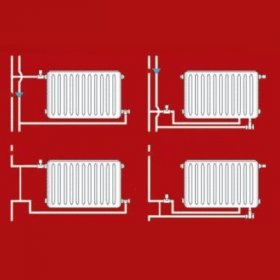
If we talk about what comfort in the home primarily depends on, then warmth will be one of the primary factors. It is it that “breathes life” into any building, regardless of whether it is a luxury house with several floors or a small apartment in an old building. What provides heat? Naturally well-designed heating system. Moreover, in modern conditions it should be not only effective, but also economical, and it is not easy to achieve such a balance. Although, nothing impossible, in principle, does not exist, therefore, on the pages of our website we consistently tell how to create excellent heating in the home. This time our topic: connection schemes for heating radiators. This is one of the most important points in the installation of the heating system, which can be implemented in several ways.
What types of heating systems are there?
In order to understand how to connect a heating radiator, you need to be clearly aware of which system it will integrate into. Even if all the work will be carried out by masters from a specialized company, still the landlord needs to know what kind of heating scheme will be implemented in his home.
Single pipe heating
It is based on the supply of water to radiators installed in a multi-story building (usually in high-rise buildings). Such a connection to a heating radiator is the simplest.
However, with the availability of installation, such a scheme has one serious drawback - it is impossible to regulate the heat supply. Such a system does not provide any special devices. Therefore, heat transfer complies with the design norm laid down by the project.
Double pipe heating
Considering the options for connecting heating radiators, it is naturally worth paying attention to the two-pipe heating system. Its functioning is based on the supply of hot coolant through one pipe, and the discharge of chilled water in the opposite direction through the second pipe. Parallel connection of heating devices is realized here. The advantage of this connection is the uniform heating of all batteries. In addition, the heat transfer intensity can be controlled by a valve that is mounted in front of the radiator.
Important! The correct connection of heating radiators implies compliance with the requirements of the main regulatory document - SNiP 3.05.01-85.
There is also a combined heating option - with radiators and underfloor heating. Read more about this in our article:https://aquatech.tomathouse.com/en/otoplenie/razvodka-otopitelnoj-sistemy/radiatory-plyus-teplyj-pol.html.
Choosing a radiator installation location: what is the importance?
Regardless of whether the radiators are connected in series or parallel, the functional purpose of these devices is not only to heat the room.By means of batteries, a certain protection (screen) is created against the penetration of cold from the outside. This explains the location of the batteries under the windowsills. With such a distribution of radiators in places of the greatest heat loss, that is, an effective thermal curtain is created in the area of window openings.
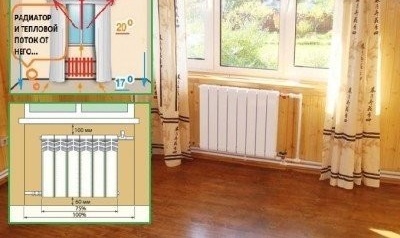
In this place, the battery can not be simply can not. With its help, the cold air from the street creates a barrier
Before considering ways to connect heating radiators, it is necessary to draw up a layout of these devices. It is important to determine the correct mounting distances for radiators, which will ensure their maximum heat transfer. So, heating batteries are absolutely correctly located if:
- lowered from the bottom of the windowsill by 100 mm;
- 120 mm from the floor;
- spaced from the wall at a distance of 20 mm.
Violating these standards is not strictly recommended.
Coolant circulation methods
As you know, water, but usually it is poured into the heating system, can circulate forcibly or naturally. The first option involves using a special water pump that pushes water through the system. Naturally, this element is included in the overall heating circuit. And it is installed in most cases either near the heating boiler, or is already its structural element.
A system with natural circulation is very relevant in places where frequent power outages occur. The pump is not provided in the scheme, and the heating boiler itself is non-volatile. Water moves through the system due to the fact that the heated coolant is displaced by the heated column of water. How the connection of radiators will be realized under such circumstances depends on many factors, including the peculiarities of the passage of the heating main and its length.
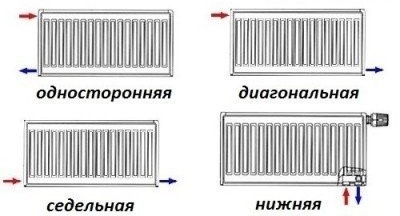
Any of the four connection methods can be implemented if there is a circulation pump in the heating system
Read also what can be used to mask heating radiators, how to close them properly:https://aquatech.tomathouse.com/en/otoplenie/radiatory/kak-i-chem-zakryt-batareyu-otopleniya.html.
So, we will analyze these options in more detail.
Method number 1 - one-way connection
Such a battery connection involves the installation of a supply pipe (supply) and a discharge (return) to the same radiator section:
- top feed;
- return below.
Thus, uniform heating of all sections of each individual battery is ensured. One-sided heating system is a rational solution in one-story houses, if it is supposed installation of radiators with a large number of sections (about 15). However, if the accordion has more sections included, then significant heat loss will occur, which means it is worth considering another connection option.
Method number 2 - lower and saddle connection
Actually in those systems where the heating pipeline is hidden under the floor. In this case, both the inlet coolant pipe and the outlet pipe are mounted to the lower pipes of the opposite sections. Such a battery connection has a “weak” point in low efficiency, since in percentage measurement heat loss can reach 15%. By the logic of things in the upper part, the radiators are heated unevenly.
Method number 3 - cross (diagonal) connection
This option is designed to connect batteries with a large number of sections to the heating system. Thanks to the special design, the heat carrier is evenly distributed inside the radiator, which ensures maximum heat transfer.
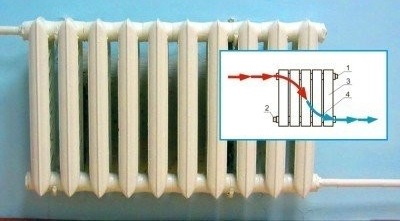
The direction of movement of the coolant during cross-connection (1-Mayevsky tap; 2-cap; 3- heating radiator; 4- directional movement of the coolant)
The answer to the question of how to properly connect the heating battery in such a situation is extremely simple: the supply is from above, the return is from below, but from different sides.With a diagonal connection of radiators, heat loss does not exceed 2%.
We tried to reveal the topic of possible schemes for connecting heating radiators in as much detail as possible. We hope you can appreciate all the pros and cons of each of the options described, and choose the most relevant in your particular case.
To maintain the temperature in the house and apartment, you need to think through a heating system by including a temperature regulator in it. Learn more about installing this device in our article:https://aquatech.tomathouse.com/en/otoplenie/radiatory/termoregulyator-dlya-batarej-otopleniya.html.
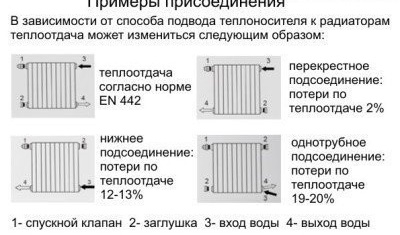
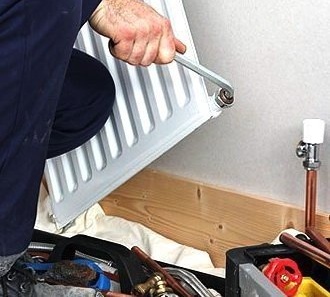


12 comments